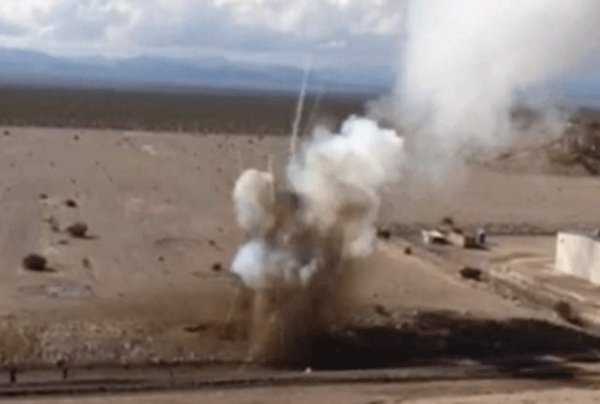News & Articles
Browse all content by date.

Last Oct. 18, a low-level radioactive waste dump 12 miles from Beatty, Nevada, caught fire in spite of the dump’s having been closed for 23 years. Because the site is state-owned, the Nevada Department of Public Safety (DPS) Fire Marshal Division was responsible for investigating what it calls the “industrial fire” that burned for over 24 hours.
The DPS’s 305-page investigation report concluded that heavy rainfall drenched one of 22 waste trenches so deeply that water reacted explosively with buried metallic sodium. Metallic sodium reacts “exothermically” with H2O, to the point that it can produce highly flammable hydrogen and explode.
Up until the dump closed in 1992, radioactive materials were buried in steel drums, cardboard and wood crates. The DPS report says 116 drums of metallic sodium -- packed in oil -- were dumped in the shallow trench that ignited.
The summary of the report assures readers of two significantly different conclusions: (1) that the authorities “detected no radioactive release from the site”; and (2) that “there was no release of radioactive materials.”
Don’t heave a sigh of relief. The report actually says that while No. 1 may be true, No. 2 almost certainly is not.
The report says witnesses, “observed debris ejecting out of the crater fifty (50) to sixty (60) feet into the air.” In his affidavit, witness Bob Marchand, Gen. Mngr. of the US Ecology Nevada dump facility adjacent to the abandoned (burned) dump, says “there was a sudden release
of soil and debris from the fire crater.” And Marchand recalled that, “there would be a period of fairly significant bright red flame followed by a period of relative inactivity until another release
This cycle continued for several hours.”
Eye witnesses reported hearing “some sounds of bangs,” seeing bright orange flames shooting up five feet, and smoke coming from the area labeled “Radioactive Materials.” The second sentence in an affidavit by witness John Dyer is, “The security guard, Rick [Richard Stoddard], asked if I had just heard a loud explosion.” Later, “We saw the ground erupt with flame, smoke and flying debris.” Stoddard’s affidavit says around 11 a.m., “I heard what sounded like a sonic boom.” Then around 12:00 “we heard some muffled small explosions.” At approximately 1:30, “It was then that the largest explosion happened, and we took cover.”
When the DPS report gets to its conclusions about the accident, it waxes inconsistent and self-contradictory. DPS Fire Marshal Division officer Martin Azevedo reports, “The reaction was not an explosion” but an “exothermic reaction.” Whole 55-gallon steel drums were part of the “ejected material” catapulted from the trench. Azevedo admits, “We located debris 190 feet to the east at its furthest point from the crater.”
Fine Print Can be Dangerous
Rather than detecting no release of radioactive materials, the report actually notes otherwise.
In the Dept. of Health & Human Services “Radiation Control Program” section of the report, DHHS says that Marchand (of US Ecology) told them his “radiation dose rate survey meter, reported no detected radiation above 2x background (Upwind and 300 feet from the site).”
To translate, upwind of the fire -- opposite its plume of smoke -- gamma radiation was found to be twice as high as normal.This was all on Oct. 18, before outside radiation detection teams arrived. On the Oct. 19, ground testing was done by the Nevada National Guard Civil Support Team 92, and like the day before, they reported “no detectable radiation above 2x background.”
How did this warning of a doubling of “background” radiation away from the fire’s plume of smoke get trunkated -- by the Executive Summary and by daily news reporters -- into “no detectable radiation”? Who cut the three additional and crucial words?
Throughout the report, witness to the fire on Oct. 18 like John Dyer note “smoke drifting northwest,” and “we heard small popping sounds, similar to fireworks,” and “the smoke had dissipated,” and “As before, the smoke was drifting to the northwest.”
The state National Guard arrived the next day, well after the wind blew (video recorded) plumes of smoke away from the fire and its repeated explosions. This, Oct. 19, is when US EPA’s Remote Sensing Lab did some aerial testing and came up with (surprise!) nothing. “All clear,” it said.
Almost all the official assurances and “statement of fact” that appeared in news accounts at the time of the fire turn out to have been nuanced misdirection or deliberate falsehoods. So the Beatty, Nevada radioactive waste fire is another lesson in reading the news, reading between the lines, then reading the fine print.
| Tweet |

